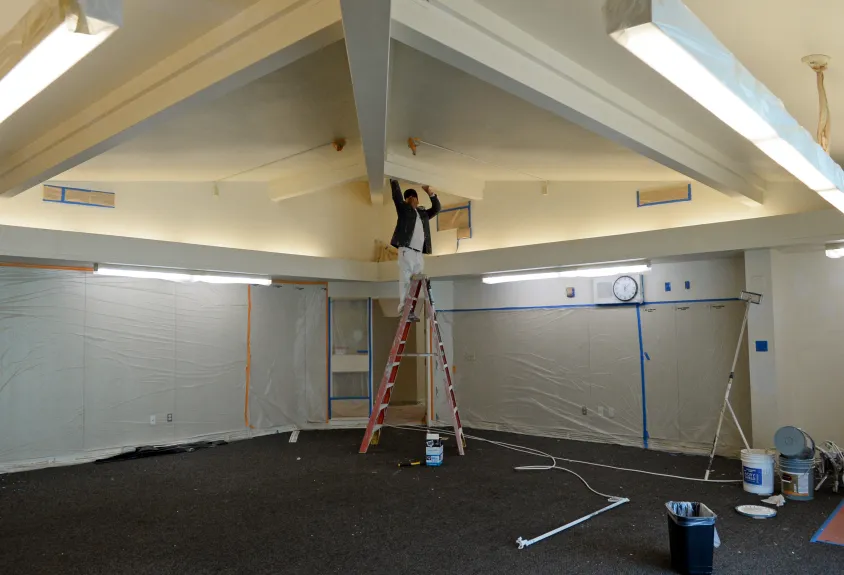
Worker Isadoro Mungille prepares a classroom for use at Short Elementary School in San Rafael, Calif., on Tuesday, Jan. 23, 2024. (Alan Dep/Marin Independent Journal)
The former Short Elementary School in San Rafael will reopen in the fall as an early childhood education center.
“The space will be designed specifically for our youngest learners,” Stephanie Kloos, executive director for elementary education at San Rafael City Schools. “The new playground, the bathrooms and the classes themselves will be sized for kids ages 3, 4 and 5.”
The building in the Gerstle Park neighborhood formerly housed kindergarten through fifth grade, but was shuttered in 2020 because of declining enrollment.
In its new iteration, the site will have three to four transitional kindergarten classes, four half-day early intervention classes for special education students and four preschool classes run by the nonprofit Community Action Marin.
“We will have four preschool classrooms at Short, each focused on school readiness, with 17-20 children enrolled and engaged in learning through play,” Shana Hewitt of Community Action Marin said in an email.
“CAM’s preschool classrooms are funded by county, state and federal sources to provide a comprehensive, whole-family approach to Marin County’s youngest children and their families,” Hewitt said.
Community Action Marin will lease the classroom space from the school district after transferring its operations from San Pedro Elementary School and 215 Mission Ave. in San Rafael.
Community Action Marin offers free or affordable child care and other family services through the federal Head Start program and other state and local initiatives.
“Together, our joint efforts at Short School are creating community connections that result in better outcomes for all,” Hewitt said.
Although Kloos said enrollment numbers are still in flux for the transitional kindergarten classes, the plan is to transfer children in transitional kindergarten by bus from two other district schools: Laurel Dell Elementary School and Venetia Valley TK-8 School.
The Laurel Dell switch is expected to be ongoing because it does not have enough room to add more transitional kindergarten classes. The Venetia Valley transfer is planned to last only during the 2024-25 school year while new transitional kindergarten classrooms are being built.
Transitional kindergarten is a class for 4-year-olds whose fifth birthdays missed a formerly tight eligibility window for kindergarten — Sept. 2 to Dec. 2.
Although in the past there was a small population of those students, their numbers are now growing as the eligibility window has been expanding by two months every year since Gov. Gavin Newsom mandated a phased-in universal transitional kindergarten program in 2021.
In the fall, 4-year-old students who will turn 5 between Sept. 2 and June 2, 2025, are now eligible for transitional kindergarten. Within the next year or two, all 4-year-olds will be able to attend transitional kindergarten.
Kloos told San Rafael Board of Education trustees at a meeting on Jan. 22 that the district will make every effort to add bus routes to allow transitional kindergarten students who have older siblings at either Venetia Valley or Laurel Dell to ride along with them to keep them company.
The older siblings would then be dropped off at their respective schools after the Short School drop-off.
The special education early intervention classes will be transferred from another site in San Rafael. The goal of the transfer, according to a presentation at the meeting, would be to increase access for the students to general education opportunities and to support improved transitions to kindergarten.
Kloos said the renovations at Short are expected to be complete by Aug. 5. Work is underway to paint and re-carpet the interior, install a new roof on the portables area and build a new playground and bathrooms, she said.
The Short School renovations will cost approximately $2.26 million, according to Tim Ryan, a district planner. The funding will come from voter-approved school bond funds, Ryan said.
